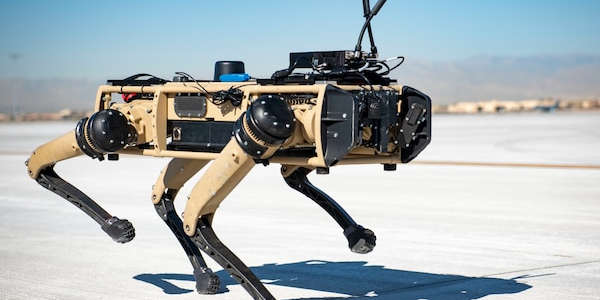The Department of Homeland Security is testing “robot dogs” (they look a lot like Boston Dynamics’ Spot) for border patrol on the U.S./Mexico border.
The robots are going to take over for humans in jobs that require hard work in harsh environments, which is one of the main reasons for automation. Heat, humidity, and hostile humans are among the challenges the government has in mind.
The official name is not “robot dogs.” The Spot lookalikes are called Automated Ground Surveillance Vehicles (AGSV). They send video footage to their operators and collect other data with a variety of sensors. They’re being tested with as much as 20 pounds of cameras, radios, and sensors attached.
Their ability to handle a variety of terrains, from desert sand to human-made environments, is also being tested. They travel autonomously, using GPS, but they are being remotely controlled with laptops and handheld devices.
Previous uses
Ghost Robotics, the company that makes the AGSVs, made headlines when it mounted a rifle on its robot dogs for a trade show. Homeland Security has not said anything about adding weapons into the mix. Its robot dogs will be for patrolling and surveillance.
The New York Police Department, however, stirred up a lot of controversy when it tried robot dog patrols on the mean streets of the city. People suggested that these tools were dehumanizing to the people living in the neighborhoods.
The border patrol idea may face the same kinds of concerns.
However, Homeland Security is being very clear about the value of its “force multipliers,” focusing on the ways in which the robot dogs help to keep border agents safe.
Automation is intended to take on dull, dirty, dangerous jobs for human beings. “The southern border can be an inhospitable place for man and beast, and that is exactly why a machine may excel there,” said Brenda Long of Homeland Security.
